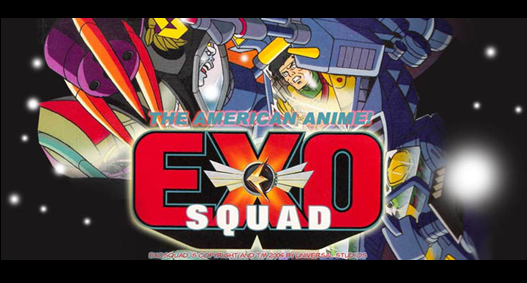
I love anime; I can name off several series I have on DVD, and about as many manga. Yet I’ve moved beyond the stage where I believed that all anime could be defined by a single set of positive (or negative) traits. Instead, I view anime more as a body of entertainment that can produce some wonderful works, but also things that are horrible, boring, or trite.
Which means that I was in no mood to agree with ….this. I like many of the videos on this site, just like I like many anime, but this is….wrong. This is allegedly the Top 11 American Anime video, and it’s an absolute mess.
Starting with the term “American Anime” itself. No matter how you would try to define “anime”, slapping “American” onto it would be either an oxymoron or redundant. If you define “anime” as cartoons from Japan, it’s an oxymoron. If you want to be super-snobby and remind us that the Japanese use “anime” to refer to all cartoons, then there’s no reason to assign special traits to “anime”, hence making it redundant to refer to “American anime”.
Now, I have seen other nerds who want to use the term “anime” to refer to all animation that attempts to have depth, regardless of country of origin, which is just what Suede is doing. However, the term “anime” has never, on any large scale, been defined purely by its content. This simply would not stick, as one would have to ignore the dozens of anime who do not fit this narrow description. To narrow “anime” down to only being cool and action-oriented sf and fantasy with drama is completely disingenuous. It’s exactly the same as considering all anime to be tentacle porn.
Furthermore, the tone of even series like Avatar: The Last Airbender are more reminiscent of local cartoons than of anime. There are some indefinable qualities of tone and artwork that ensure even the best “anime style” cartoons do not feel like a Japanese work dubbed into English. There are many cross-cultural plot conventions and character types, but many others that are distinct to Japan, either in terms of content or presentation. This is another reason why “American anime” does not exist.
These examples of “American anime” are thus defined as much by this new narrowed definition of “anime” as by any direct Japanese influence. Just as the arguments hinge on taking a narrow definition of anime, they also rely on taking a very narrow definition of American cartoons and attributing every deviation from that format to anime influences and nothing else. Anime apparently created character arcs, character death, emotional intensity, dramatic atmosphere, ongoing plot threads, heroic robots, dark endings for the heroes, slick and kinetic sci-fi style, and...split-screen animation. No other possibilities are introduced, even though entertainment is never created in a vacuum of its own medium.
In this case, animation doesn’t just feed off other animation, foreign or otherwise, to create new works, and cartoons can’t Gargoyles was influenced by cop dramas such as Hill Street Blues, and Samurai Jack draws from live-action film as well. One can’t look at something that you don’t see often in American cartoons and immediately conclude it must have come from solely from exposure to anime. And even if anime were the sole guiding hand in creating these series, they still would not be “American anime”, because the term just does not work.
Yes, there are still problems with the American animation industry. There is the Disney Monopoly, and some anime for which it will be a long time before something similar exists on American television or direct-to-video. Yet these issues will not be helped by treating anime as a thing that American cartoons must inevitably leech off to be interesting. If anime was to contribute anything to expanding the complexities of American cartoons, it was to be just as one of many possible sources of inspiration, and to prove that certain types of series could be marketable...not that they could even exist in the first place.

No comments:
Post a Comment